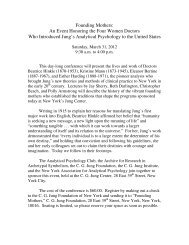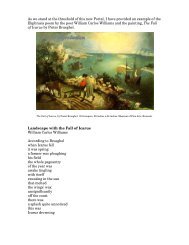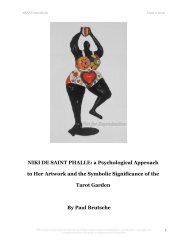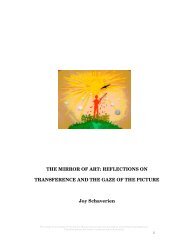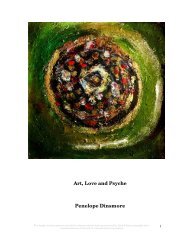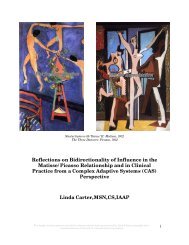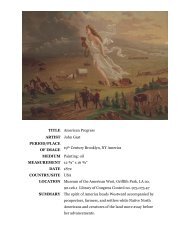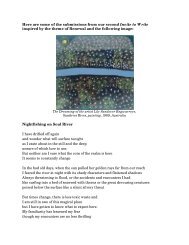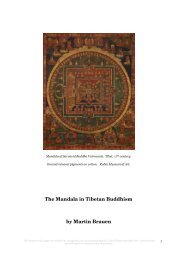Pictorial Space throughout Art History: Cézanne and ... - ARAS
Pictorial Space throughout Art History: Cézanne and ... - ARAS
Pictorial Space throughout Art History: Cézanne and ... - ARAS
Create successful ePaper yourself
Turn your PDF publications into a flip-book with our unique Google optimized e-Paper software.
<strong>ARAS</strong> Connections Issue 2, 2012<br />
When he was 40 he become dissatisfied with his job. Then, for the first<br />
time, he become conscious of his need to assert himself. Since he had never<br />
negotiated his assertion, it emerged in its primitive form, “black-<strong>and</strong>-white” or<br />
split into the two extremes of destructive rage <strong>and</strong> passivity. These are two sides<br />
of the same coin, assertion <strong>and</strong> non-assertion. When he became aware of these<br />
two extremes he felt worse. Neither worked. Each had injured him. The tension<br />
between them was painful. He struggled <strong>and</strong> failed to reconcile them |53| |54|.<br />
He tried to immerse himself in television <strong>and</strong> to believe that it was his boss's<br />
problem, not his. But when he was honest he had to suffer his own tension. In<br />
painting, likewise, when opposing planes are first introduced onto the canvas<br />
they are not balanced, not related to each other. The painter has to struggle with<br />
these planes; he or she has to tolerate the frustration of seeing that they do not<br />
work together.<br />
When Ted had suffered long enough solutions arose spontaneously. As a<br />
child he had played the saxaphone <strong>and</strong> now he returned to studying it seriously.<br />
In music he had to be sometimes receptive <strong>and</strong> sometimes penetrating. He began<br />
also to be more consciously related to other people, sometimes receptive to them<br />
<strong>and</strong> sometimes assertive. Both in his music <strong>and</strong> in his relating, the opposites were<br />
integrated into new behavior. In painting, likewise, when opposite planes or<br />
opposite movements are balanced they are integrated.<br />
As Ted began to integrate these opposites, the tension between them made<br />
him more vigorous |55| |10|. In painting the same is true: lively tension forms<br />
between opposing planes when they are integrated. Balanced movements also<br />
make the painting lively (see Vigor).<br />
The images in this paper are strictly for educational use <strong>and</strong> are protected by United States copyright laws. 65<br />
Unauthorized use will result in criminal <strong>and</strong> civil penalties.



